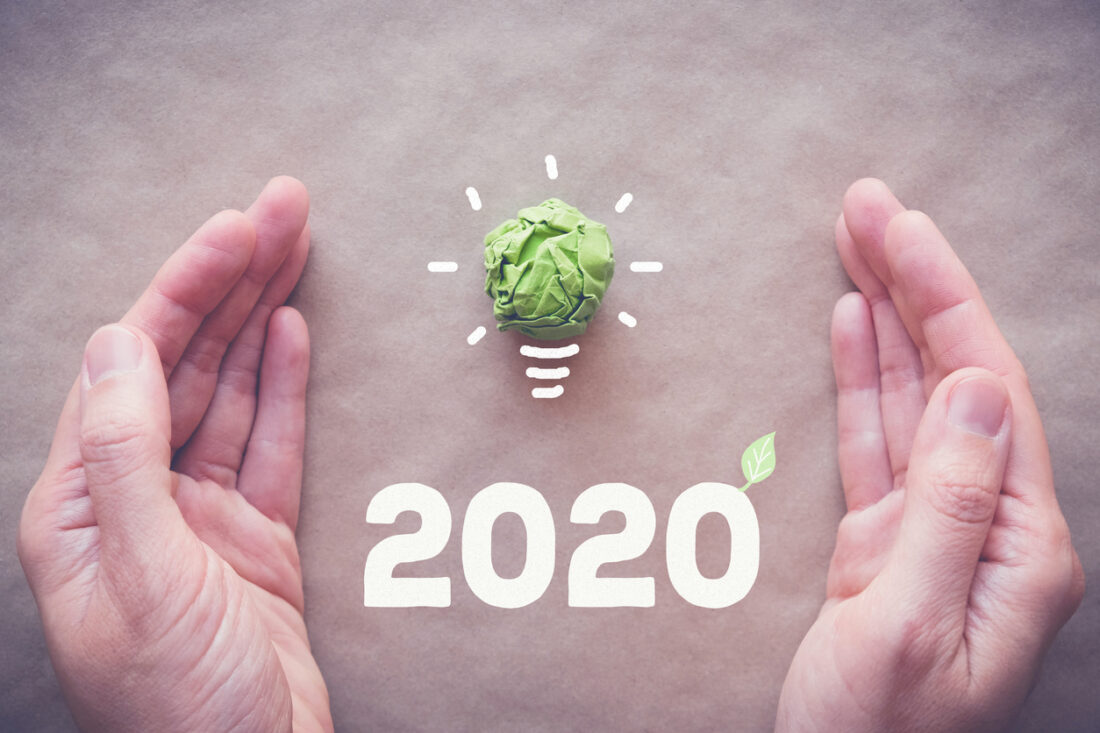
There is a current trend of governments and businesses around the world announcing that they will reach net-zero emissions, or carbon neutrality, by 2050. These announcements have come with much fanfare. Whilst it is encouraging to see such commitments to reducing greenhouse gas (GHG) emissions, there are a number of concerns that a net-zero by 2050 target raises. Firstly, this target is too far away to be meaningful. Globally, net emissions need to decrease by at least 45% from 2010 levels this decade for us to have any hope of meeting the objectives of the Paris Agreement1. If we don’t achieve these reductions, the 2050 targets are meaningless. We will more than likely have triggered a global tipping point, whereby the natural world will continue to warm the planet regardless of the actions that humans take2.
Secondly, most, if not all, governments and businesses can be carbon neutral now. What would going carbon neutral in 2020 look like? It is an investment in projects that will avoid future GHG emissions equivalent to that government or organisation’s annual GHG footprint. It is a financial transaction that enables emissions reductions in other parts of the world that otherwise would not happen.
Climate change is a global problem that can be solved with global solutions. This means we have a world full of offset options to choose from, many of which are more affordable than local options and will provide enormous benefits to the lives of the communities in which they are implemented. A study conducted by the Imperial College London University in 2016 found that for every tonne of carbon avoided by investing in cookstoves, the benefit to the community was in excess of US$7243. This benefit came in the form of increased skills and jobs, time saved cooking, forest conservation, fuel savings and improved health.

Figure 1 : Additional benefits from cooktop stove carbon offset projects (credit: International Carbon Reduction and Offset
Alliance)
Carbon offset projects can provide such benefits as displacing coal-generated power, avoiding significant pollution from entering the atmosphere. This pollution is directly responsible for approximately 1.6m4 deaths in China each year. Another example is providing clean water via water purifiers to families so that they no longer have to boil water over burning wood to avoid contracting diseases. Simple things that we in the developed world take for granted become possible if we fund them. And given new technology is becoming more and more affordable each year, it may be that we can afford to assist the developing world with their transition, as well as fund our own transition, if we do so in that order.
It is not uncommon to hear people decrying businesses that achieve net-zero emissions via offsetting by describing such action as “just offsetting.” Such comments devalue action in developing nations in favour of action in our home country. Of course, already industrialised, developed nations should be doing everything in their power to reduce their emissions. However, using international offsets allows us to reach carbon neutrality now, well before we otherwise would if we only consider emissions within our own borders or organisations. International carbon offsets effectively buy us time to reduce our industrial emissions without further damage to our atmosphere. Even at today’s levels of warming, people, and the natural world, are being severely impacted by climate change. As Australia’s devastating 2019/20 bushfire season so sadly demonstrated, we no longer have the luxury of time when it comes to emissions reductions.
An example of favouring action in our nation over that of developing nations is the purchase of Green Power in Australia. Purchasing Green Power is essentially purchasing an offset (renewable energy equivalent to the amount you have purchased is put into the grid at a point in the future) at price of approximately $61 (ex GST)/t CO2 -e avoided. Businesses that are certified carbon neutral under The Carbon Reduction Institute’s NoCO2 program can purchase an offset in a wind energy project in China for $7.20 (ex GST)/t CO2 -e avoided5. A tonne of carbon is a tonne of carbon, and if the money Australians invested into Green Energy was invested into wind projects in China we could have avoided nearly 8.5 times the emissions, at no extra cost.
I am not alone in this thinking. The Australian Government’s Climate Change Authority6, the Australian Industry Group, the Business Council of Australia and the Minerals Council7 all support the use of international carbon credits to reach our domestic targets, seeing them as a cost effective way to achieve our emissions reduction targets and drive stronger climate action.
So, what should you look for in an offset? The NoCO2 program developed by The Carbon Reduction Institute (CRI) only recommends offsets in renewable energy and energy efficiency projects. This is because until we stop putting emissions into the atmosphere, we are not going to solve the climate crisis. It can be likened to a bath that is overflowing. The first thing you do is to turn off the tap, and then you pull out the plug. Furthermore, as an offset, planting trees poses an enormous financial risk, as, due to the changing climate, there is no guarantee that they will grow to maturity and provide the sequestration promised. In this instance, businesses making a carbon neutral claim utilising such credits would potentially need to repurchase offsets to meet their obligations under the Competition & Consumer Act (2010).
In addition to offsets being in renewable energy or energy efficiency, the NoCO2 program also requires offsets to be financially and environmentally additional (would not otherwise happen without the offset funding, or due to legislation or targets that are in place), be permanent, not create leakage (avoid emissions in one area, only for them to occur in another area) and to be validated and verified. You can see there is a lot of rigour that goes into choosing suitable offset projects.
Organisations, events, buildings, and products can be certified as:
- NoCO2 (carbon neutral)
- LowCO2 (offset a percentage of the carbon footprint, working towards 100%)
CRI also works with clients to fully offset their historical carbon footprint or become climate positive by offsetting an amount in excess of 100% of their annual baseline carbon footprint. In addition, Individuals can offset their travel, flight, car hire and car usage emissions.
There is an urgent need for action on climate change and fortunately we have a means by which we can take immediate action to address this crisis. The Carbon Reduction Institute’s NoCO2 Certification means that we can reach net-zero now and play our part in avoiding catastrophic warming of the planet. Contact the team at The Carbon Reduction Institute to learn more about how your organisation can be carbon neutral today.
Written by Erin Remblance,
Assistant Programs Advisor at the Carbon Reduction Institute
1,225kWh x $0.050 Green Power surcharge (ex GST) = $61.25 (https://www.powershop.com.au/why-powershop/renewable-energy/greenpower/ )
[6] https://www.climatechangeauthority.gov.au/reviews/using-international-units-help-meet-australias-emissions-reduction-targets/benefits-and[7] https://www.theguardian.com/australia-news/2018/jan/03/abbotts-stance-on-international-carbon-credits-makes-no-sense-business-says

